Michigan Expansion Updates

See if Comcast services are available in your area.
We’re extending our reliable, high-speed Xfinity network to more communities in Michigan.
We operate the nation’s largest, fastest, most trusted network. We have a 60-year history of building and operating a state-of-the-art broadband network with 99.9% reliability.
We’ll continue to update this website as we gather more information regarding specific timing for your neighborhoods. Availability to sign up for services will depend on completion. Our team will also work closely with homeowners associations to keep residents informed.

How We Connect Your Community

#1) NOTIFICATION
Before our teams begin construction, you’ll receive a notification in the form of mail and/or a doorhanger. This will include information on when we will access the utility easement on your property, what to expect during the construction and tips for how to protect your property and pets. It will also include our business partners’ contact information. We’ll also partner with homeowners associations to help communicate with residents.
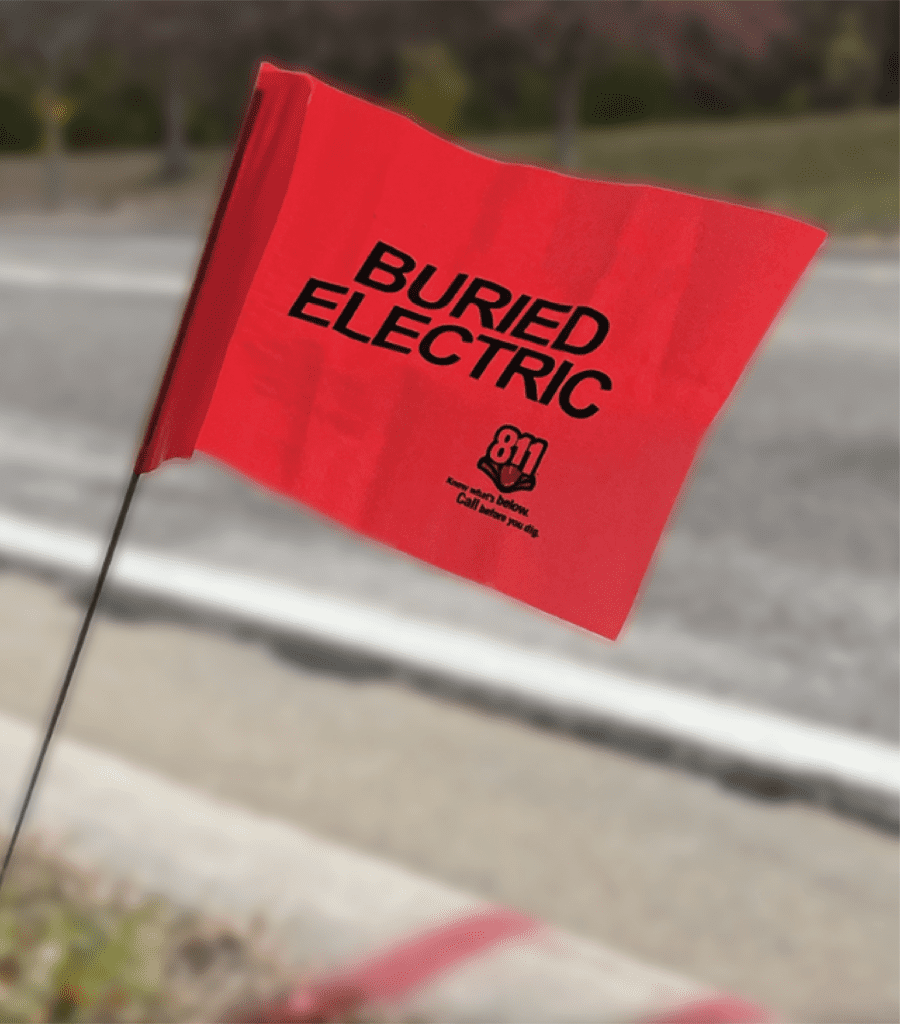
#2) MARK UTILITIES
Before digging can occur in public utility easements, states law requires the marking of lines. You will notice different color markings and flags around your community. Please do not remove these as to not delay construction. This will help keep our crews and the community safe.
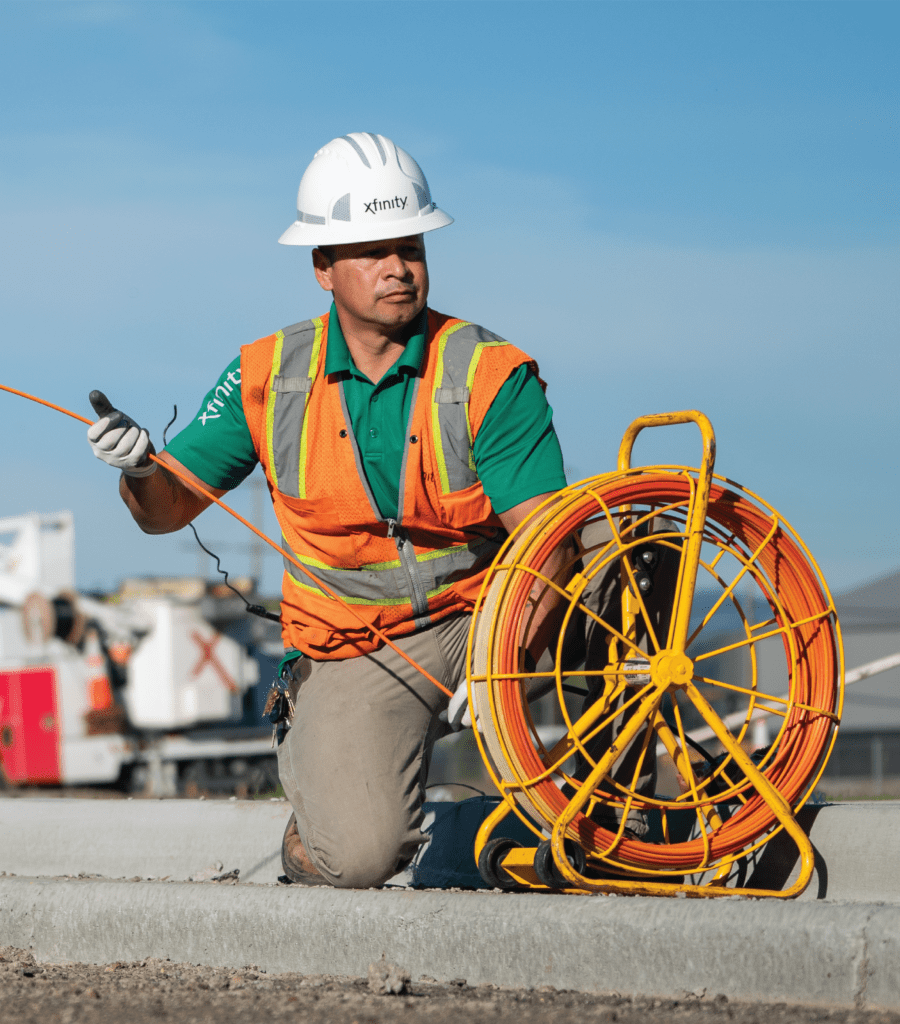
#3) FIBER & COAXIAL INSTALL
Our construction crews take the utmost care and use respect in the communities we serve. In many instances, we will need your support in accessing your front or backyard. We use state-of-the-art equipment to install fiber and coaxial lines with the least amount of disruption. We appreciate your understanding.
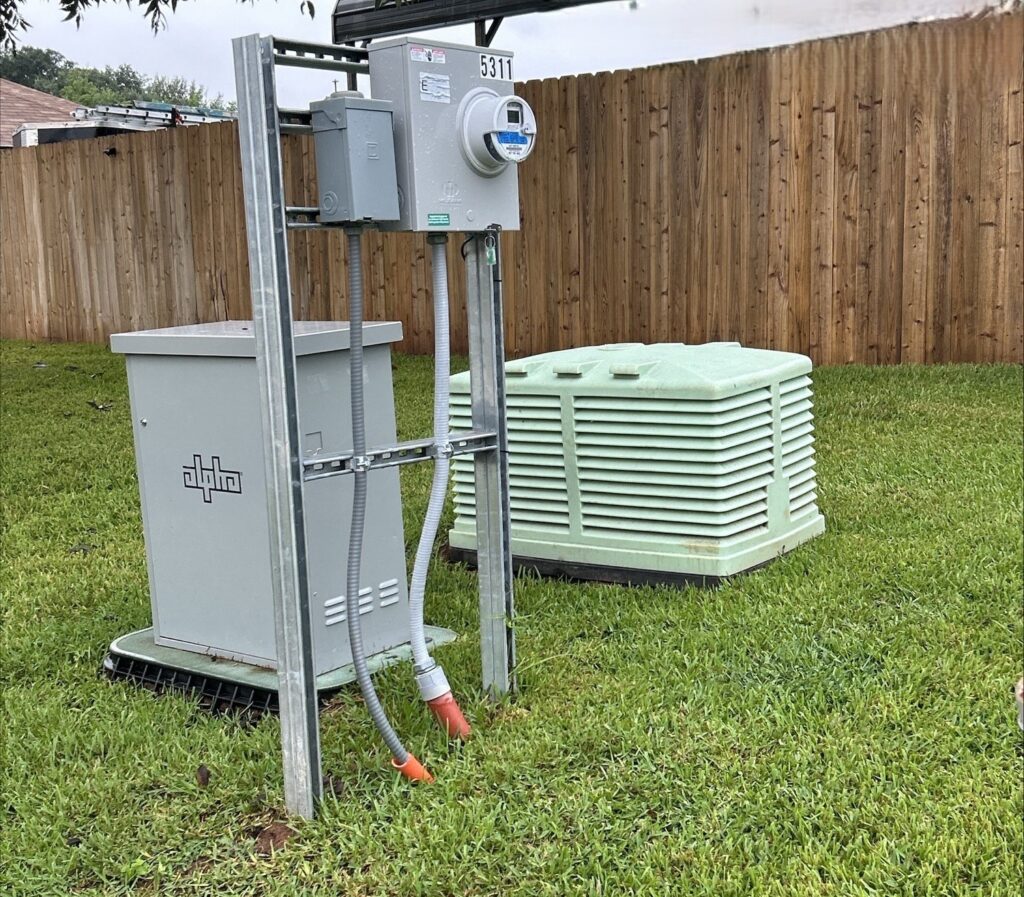
#4) RESTORATION
Yes, construction can be messy. And it can take time. But we’re committed to making sure construction areas are restored to the same condition we found it—or better.

#5) FAST AND RELIABILE CONNECTIVITY
Once construction is complete, your home and business will have access to Xfinity Internet, Xfinity Mobile, Xfinity X1, Xfinity Home and the Xumo Stream Box from Xfinity.
Powerful, reliable internet is coming to your neighborhood. Learn more about our world-class products and experiences:

Frequently Asked Questions
What is a public utility easement?
Easements give public utility companies access to a property for the purpose of installing, repairing and maintaining equipment. This includes overhead and underground electric lines, telephone and television lines, water, sewer and cable lines. These easements give utility companies the ability to run straight lines through neighborhoods rather than around individual parcels of land.
Learn more on how Comcast accesses public utility easements to connect communities in the video below.
Why is there spray paint and flags in the neighborhood or my yard?
Before construction begins, you’ll likely see crews marking the ground with flags and/or paint. This critical activity helps our business partners identify what is buried. Please do not remove these flags or markings as they are very important in making sure construction is able to be completed as quickly and as safely as possible.
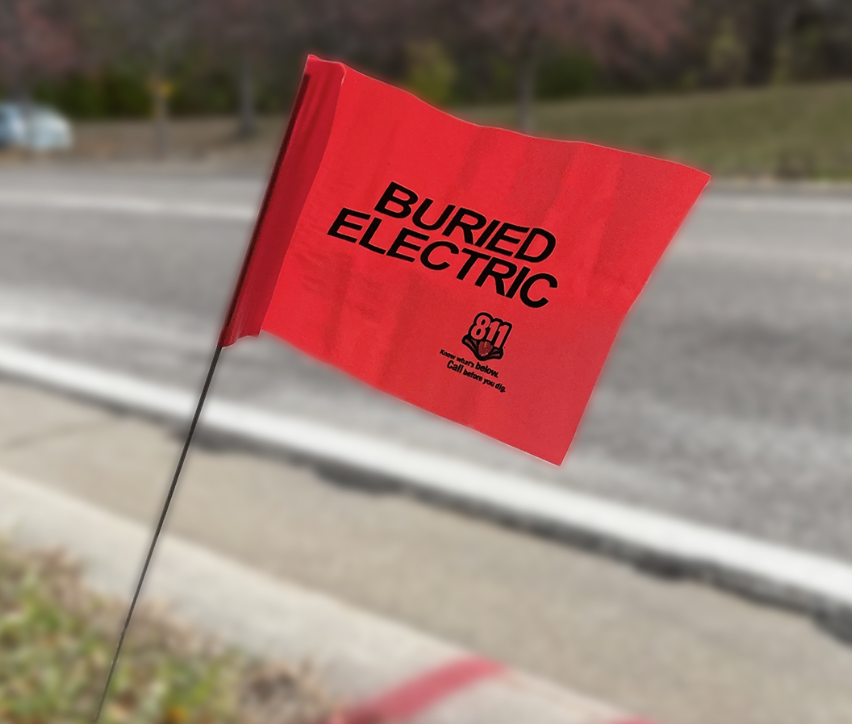
What can I do during the construction process?
• Watch for the notifications.
• If access is needed to your backyard, please make sure your pets are safe and secure during the time period provided by Comcast.
• Be patient. We’re working to complete the project as quickly and safely as possible.
• Be aware of crews. All construction workers will wear a safety vest and badge identifying themselves as a Comcast employee or an authorized Comcast contractor.
Examples of notifications you may receive:
Doorhangers
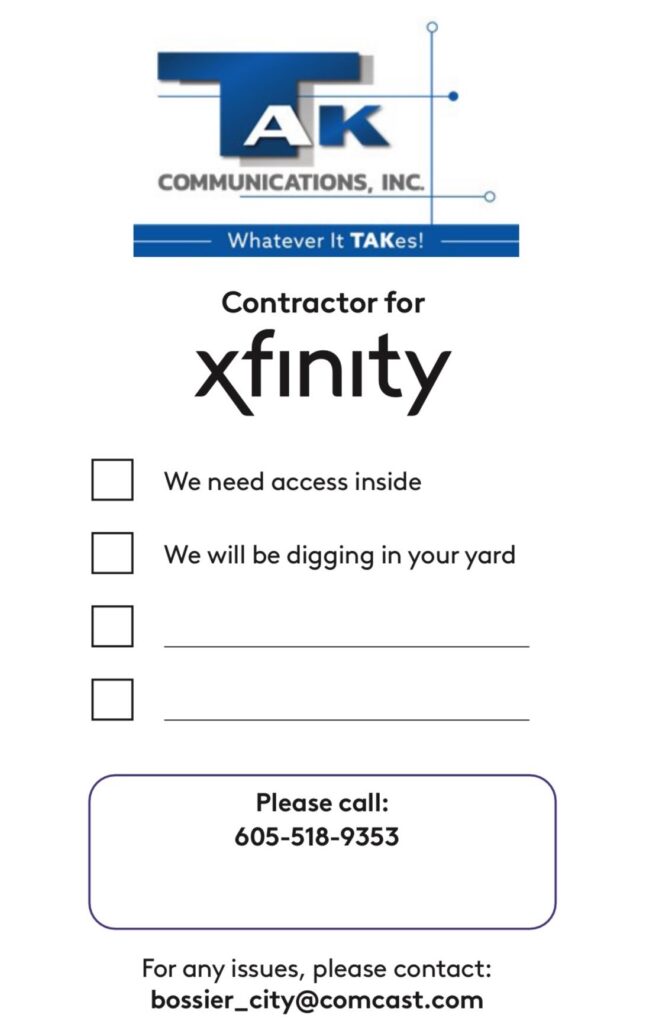
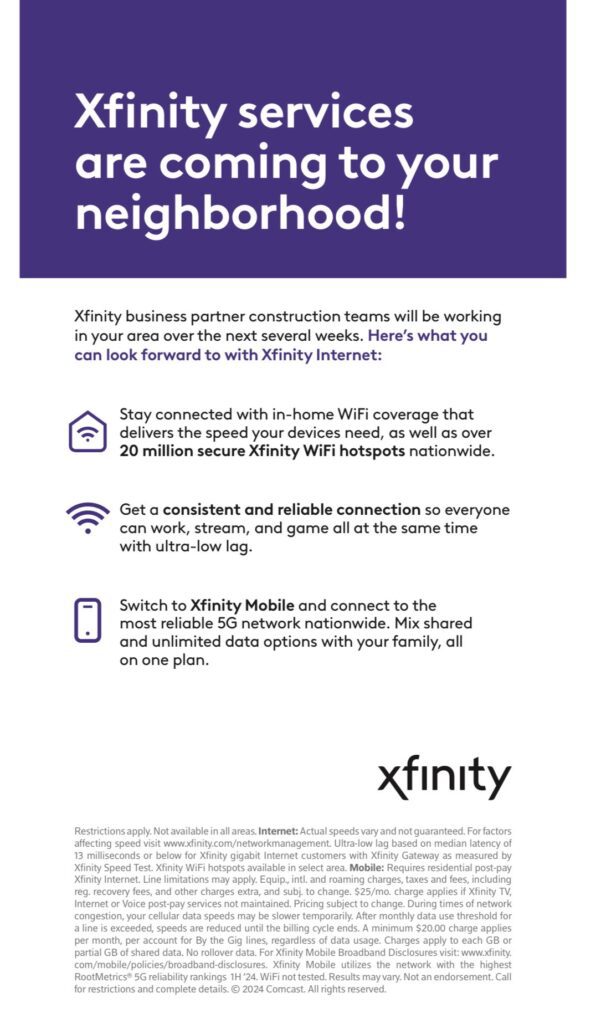
Flier (front and back)
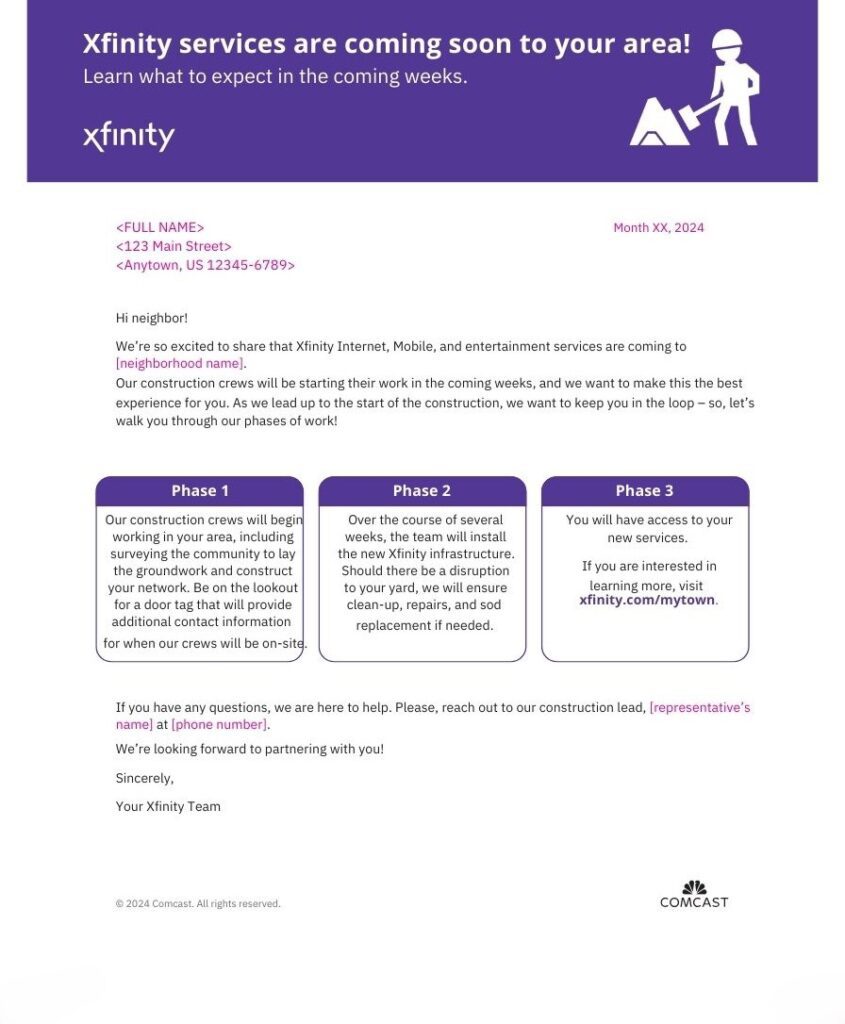
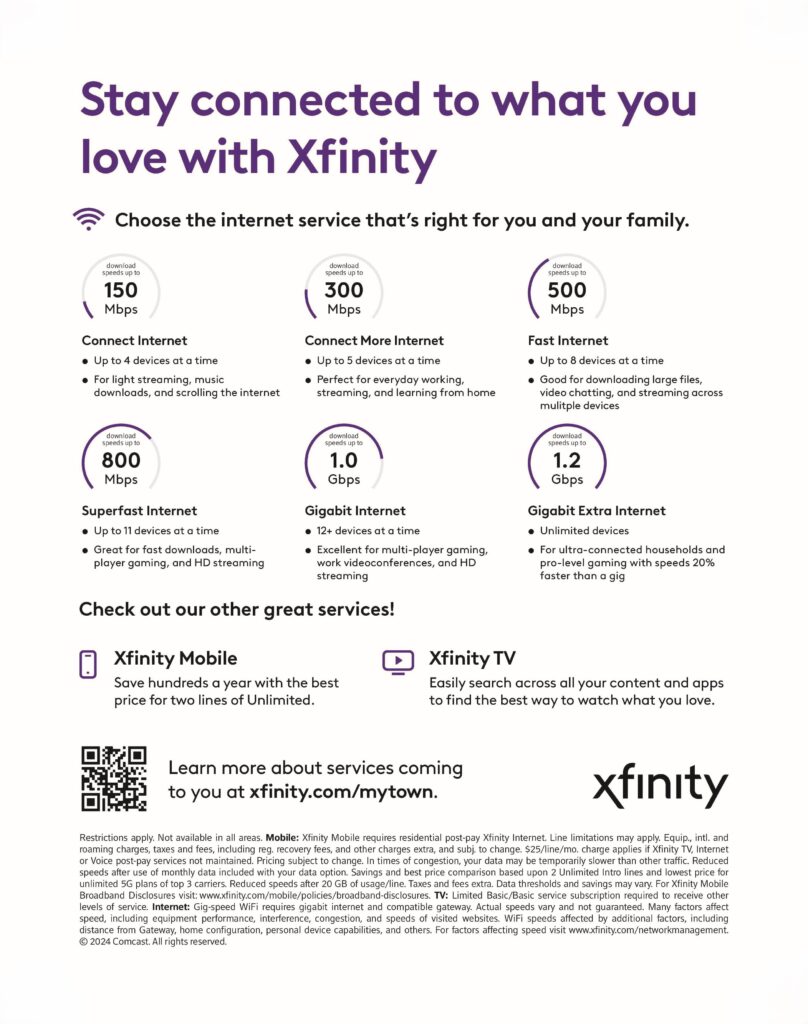
What type of equipment or trucks should I expect to see in my community throughout this process?
Residents may notice large trucks and trailers carrying directional drilling machines, backhoes and water. There may also be medium to large aerial lift vehicles to place and perform aerial splicing.
What does a construction site look like?
The image below provides a high-level overview of what a typical construction site looks like from a bird’s eye view.
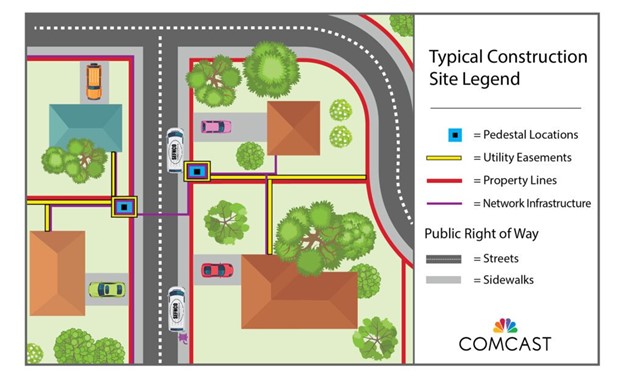
Why is there a telecom pedestal (green box) in my yard?
To bring the Xfinity network to your community, our team needs to place above-ground connection points that link to underground fiber lines. These connection points are called pedestals–or peds–and are generally light green plastic housings that enclose and secure the network connections. Their above-ground design and placement provides a more secure connection space and are much easier and faster to service in the event of a network issue or outage.
Our business partners work in collaboration with Comcast Design to minimize the number of peds in each neighborhood and place them in the least obtrusive locations.
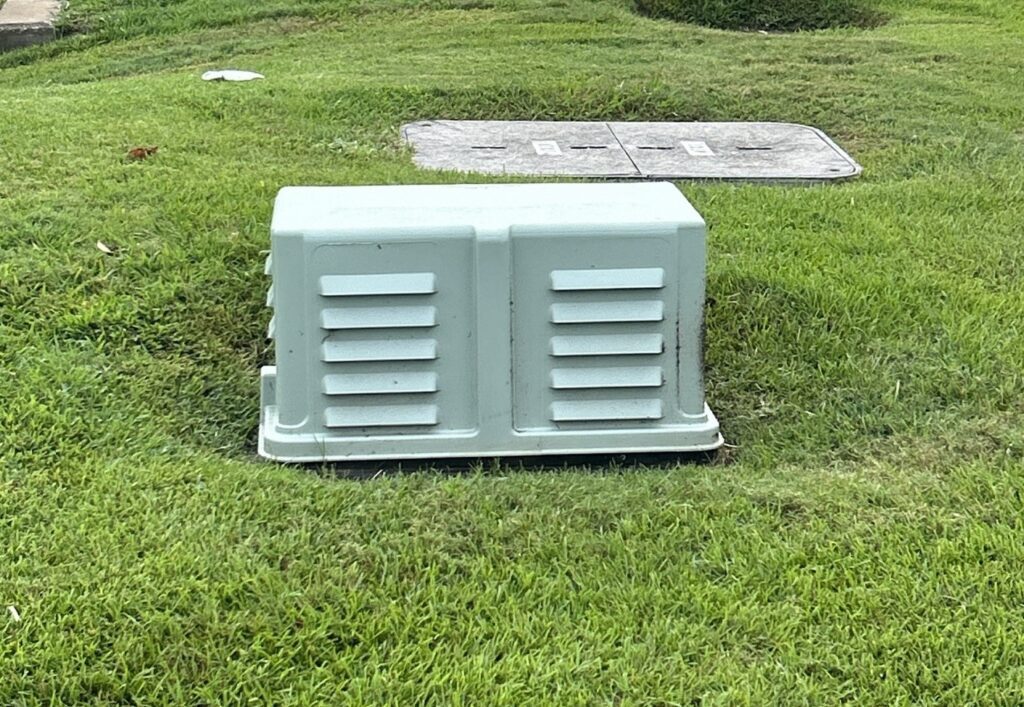
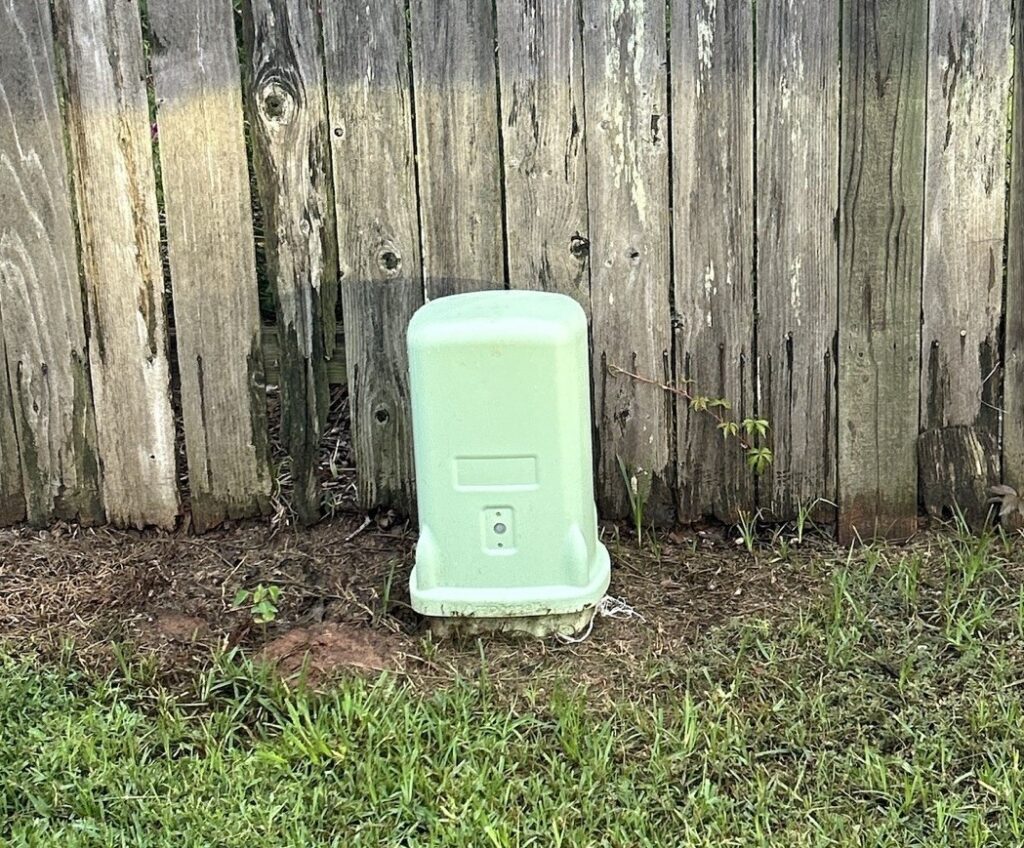
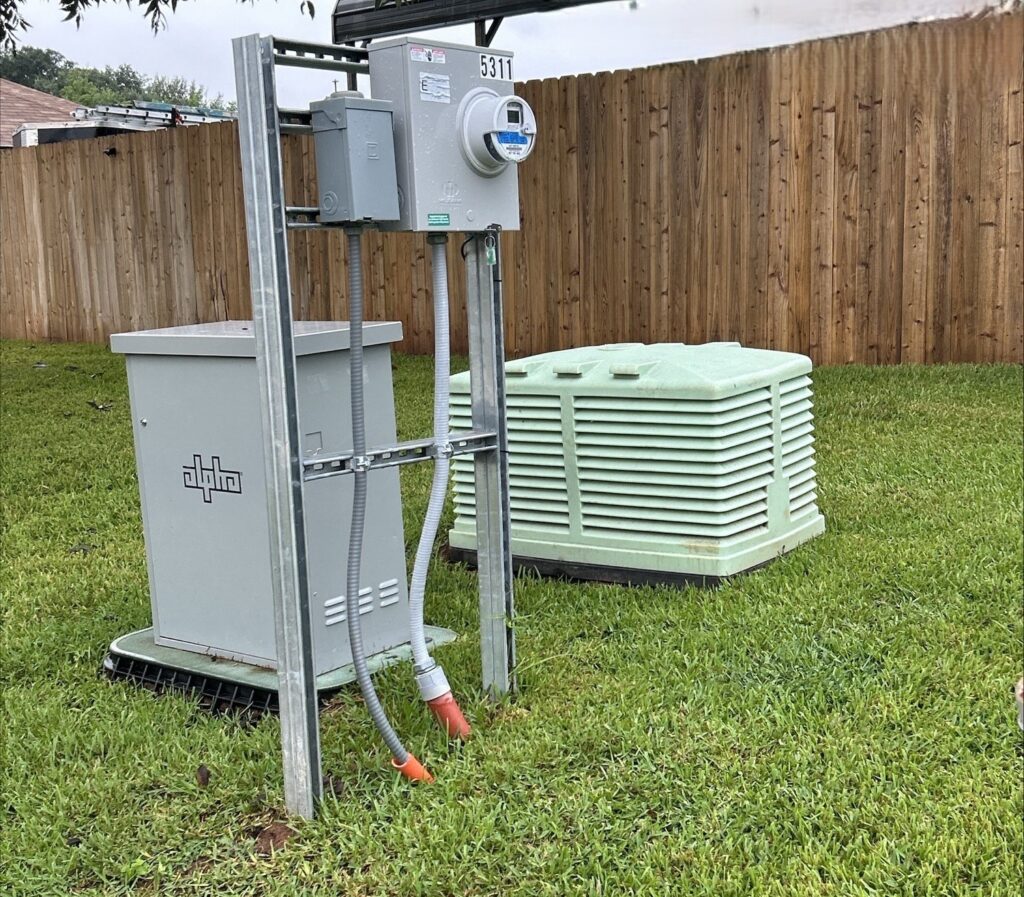
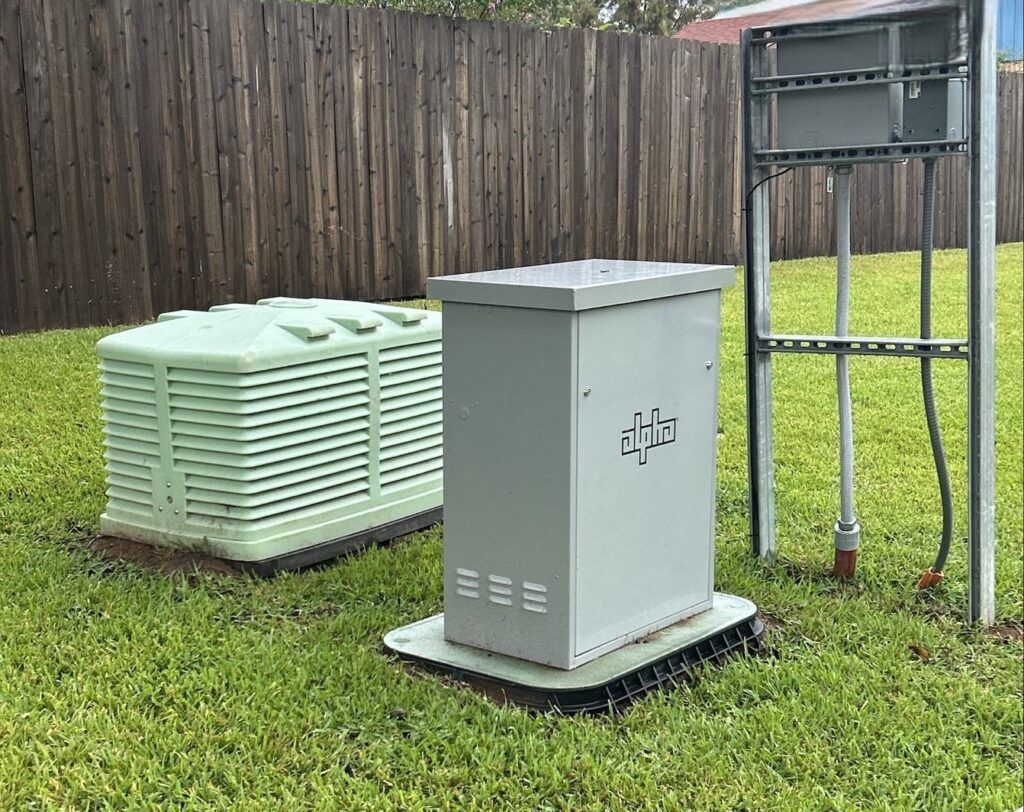
What does the restoration process look like?
Once work is complete in an area, restoration work will begin to make sure the area is restored to the same condition we found it—or better.
When will I be notified that Xfinity services will be available to me?
Our team will notify potential customers of anticipated service dates as soon as construction begins. We will also partner with HOAs to communicate to residents. Look for our Xfinity team in your neighborhood with information on how to sign up for services.

Network Terminology
As you check for updates, you might see some unfamiliar words or phrases. To help you understand our progress, here is some terminology that may be associated with our network:
Headend
A headend is a secure facility that is the starting point of every customer’s service. With hundreds of miles of fiber and cable connected to servers and other equipment, this is where our team monitors our network and packages materials to send out to our customers.
Node
After the fiber lines leave the headend, the line travels to a node. A node is a physical connection point and an important part of our network infrastructure. You may often see them on a street or even on lines or poles. The Node houses the fiber lines and converts them into radio frequencies to bring connectivity to homes and businesses. Nodes can support an entire neighborhood or a group of customers and are optimized to provide the maximum transmission of data without losing signal quality.
Tap
Taps are located throughout our service footprint. They are often seen around neighborhoods, in your yard or a neighbor’s yard. Each tap can service two to eight residences or small businesses and provide connectivity to all of our services – internet, voice, video and home security. From the tap are a series of drops, which are lines of fiber or cable that directly connect our customers to our network.
Fiber
Fiber internet is a type of broadband connection that uses fiber-optic cables to transmit data, allowing for fast and reliable internet speeds. We are fiber experts, as our network contains more than 300,000 miles of fiber. When data moves through our network, it travels 99.99% of the way over a fiber connection.
Cable
Cable internet is a type of broadband internet connection that uses coaxial cables to deliver internet service. Cable internet can reach speeds of up to 1,200 Mbps, making it suitable for activities like streaming, gaming and working from home.